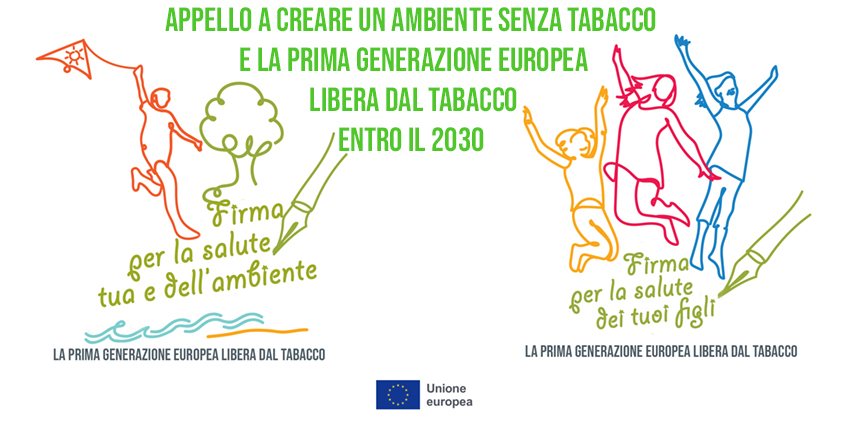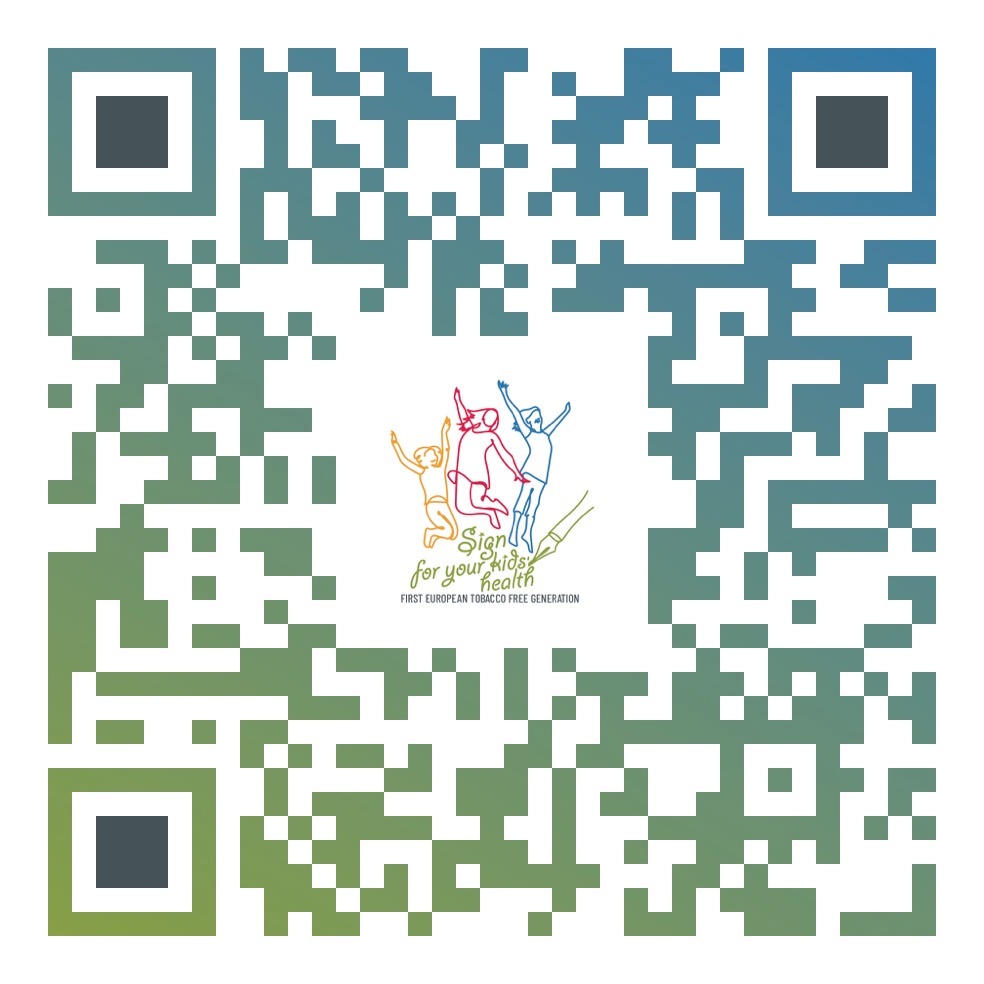Farmacocinética
Modalità di distribuzione ed eliminazione di una sostanza nell’organismo.
Più in partiolare la farmacocinetica è un ramo della farmacologia che, allo scopo di razionalizzare le indicazioni terapeutiche e la posologia di un farmaco, ne analizza gli eventi biologici che conseguono alla sua somministrazione: assorbimento, distribuzione nei varî organi e tessuti, trasformazioni metaboliche, concentrazione nei liquidi organici (sangue, urine, bile, ecc.), tendenza a legarsi ad altre molecole e a permanere in forma inattiva, capacità a mantenersi in forma libera e perciò attiva, tale cioè da raggiungere i recettori specifici, e, infine, escrezione attraverso gli emuntorî.

L'enciclopedia della Società Italia di Tabaccologia sul tabacco, tabagismo e patologie fumo correlate
(... in progress)
Chief Editor Vincenzo Zagà
Redazione: Daniel Amram, Massimo Baraldo, Roberto Boffi, M. Sofia Cattaruzza, Silvano Gallus, Giuseppe Gorini,
Fabio Lugoboni, Giacomo Mangiaracina, Biagio Thinghino, Alessandro Veliach.
| A | B | C | D | E | F |
| G | H | I | J | K | L |
| M | N | O | P | Q | R |
| S | T | U | V | W | X |
| Y | Z |
|
Rassegna Stampa Scientifica Giugno 2021
Barriers and incentives for Italian paediatricians to become smoking cessation promoters: a GARD-Italy Demonstration Project Giovanna Cilluffo1#, Giuliana Ferrante2#, Renato Cutrera3, Giorgio Piacentini4, Elisabetta Bignamini5, Massimo Landi6, Paola Martucci7, Luigi Morcaldi8, Fabio Midulla9, Giovanni Viegi1,10, Stefania La Grutta1 Journal of Thoracic Disease, Vol 12, No 11 November 2020 View this article at: http://dx.doi.org/10.21037/jtd-gard-20-003 bstract Background: Paediatricians rarely devote any time to screening and treatment for parental tobacco use. The present project is part of a Global Alliance against Chronic Respiratory Diseases (GARD)-Italy Demonstration Project, aimed to increase the skills of primary care physicians and paediatricians as “promoter of smoking cessation”. The aims of this study were: (I) to identify latent classes of barriers and incentives for smoking cessation counseling among paediatricians using latent class analysis (LCA); (II) to investigate risk factors for inclusion into the identi ed classes. Methods: In 2018, 1,500 Italian paediatricians were invited to complete an online survey on passive smoke exposure in children. LCA was used to discover underlying response patterns, and to identify respondent groups with similar attitudes toward passive smoke exposure in children. Multinomial logistic regression helped investigate which explanatory variables influenced inclusion into a class. A P value <0.05 was considered signi cant. Results: The overall response rate was 71% (n=1,071/1,500). Three classes were identi ed: Class 1 “passive” (n=226, 21.10%); Class 2 “unmotivated” (n=124, 11.58%); and Class 3 “proactive” (n=721, 67.32%). Assuming Class 3 as reference, ever having been a smoker was borderline associated (P=0.052) with increased probability of inclusion into Class 1 (OR =1.43, 95% CI, 1.00–2.06). Having 6–15 or ≥15 years of work experience versus having less than ve years was associated with decreased probability of being in the “passive” class (OR =0.46, 95% CI, 0.22–0.96 and OR =0.49, 95% CI, 0.27–0.87, respectively), as was discussing parents’ addiction to alcohol/drugs (OR =0.50, 95% CI, 0.33–0.76). Conclusions: We identi ed three pro les among Italian paediatricians related to barriers and incentives for smoking cessation promotion. Tailored educational interventions for paediatricians are required to promote smoking cessation programs.
________________________________________________ Park HY, et al. Thorax 2020;0:1–4. doi:10.1136/thoraxjnl-2019-213732 Chronic obstructive pulmonary disease and lung cancer incidence in never smokers: a cohort study Hye Yun Park, Danbee Kang, Sun Hye Shin,Kwang-Ha Yoo, Chin Kook Rhee, Gee Young Suh, Hojoong Kim, Young Mog Shim, Eliseo Guallar, Juhee Cho, O Jung Kwon ABsTrACT There has been limited evidence for the association between chronic obstructive pulmonary disease (COPD) and the incidence of lung cancer among never smokers. We aimed to estimate the risk of lung cancer incidence in never smokers with COPD, and to compare it with the risk associated with smoking. This cohort study involved 338 548 subjects, 40 to 84 years of age with no history of lung cancer at baseline, enrolled in the National Health Insurance Service National Sample Cohort. During 2 355 005 person-years of follow-up (median follow-up 7.0 years), 1834 participants developed lung cancer. Compared with never smokers without COPD, the fully- adjusted hazard ratios (95% CI) for lung cancer in never smokers with COPD, ever smokers without COPD, and ever smokers with COPD were 2.67 (2.09 to 3.40), 1.97 (1.75 to 2.21), and 6.19 (5.04 to 7.61), respectively. In this large national cohort study, COPD was also a strong independent risk factor for lung cancer incidence in never smokers, implying that COPD patients are at high risk of lung cancer, irrespective of smoking status. ___________________________________ Association of Smoking and Cumulative Pack-Year Exposure With COVID-19 Outcomes in the Cleveland Clinic COVID-19 Registry JAMA Intern Med. Published online January 25, 2021. Katherine E. Lowe, Joe Zein, Umur Hatipoğlu, Amy Attaway https://jamanetwork.com/journals/jamainternalmedicine/fullarticle/2775677
Note: Open Access.
Related coverage:
Heavy smokers face nearly DOUBLE risk of being hospitalized for COVID-19 or dying compared to people who have never smoked, study finds
"The present study provides novel empirical evidence that worry about COVID-19 is related to key cognitive-affective smoking processes beyond the effects of age, sex, race, ethnicity, COVID-19 exposure, smoking rate, e-cigarette use status, and anxiety symptoms. These results highlight the potential utility in assessing level of worry about COVID-19, a transdiagnostic construct, among combustible cigarette smokers to better understand cognitive-affective factors that may maintain smoking behavior in the context of the COVID-19 pandemic." ____________________________
Worry about COVID-19 in relation to cognitive-affective smoking processes among daily adult combustible cigarette smokers Cogn Behav Ther. 2021 Jan 29;1-15. Online ahead of print. Justin M Shepherd, Brienna Fogle, Lorra Garey, Andres G Viana, Michael J Zvolensky https://www.tandfonline.com/doi/full/10.1080/16506073.2020.1866657 https://www.tandfonline.com/doi/pdf/10.1080/16506073.2020.1866657
Note: Open Access.
"As governments introduce unprecedented measures to manage COVID-19, they need also to consider other public health risks, such as increased smoking among current smokers or relapse among recent quitters. Evidence that loneliness was associated with increased smoking during a lockdown suggests a need for cessation out-reach strategies that promote and support smoke-free practices." __________________________________
Changes in Tobacco Use During the 2020 COVID-19 Lockdown in New Zealand Nicotine Tob Res. 2021 Jan 30;ntaa257. Online ahead of print. Philip Gendall, Janet Hoek, James Stanley, Mathew Jenkins, Susanna Every-Palmer https://academic.oup.com/ntr/advance-article/doi/10.1093/ntr/ntaa257/6124272
Note: Open Access.
"The pandemic caused by COVID-19 has been a point of no return in our lives, with consequences that are difficult to imagine in other scenarios… At this point, we would like to make a special mention of one of the measures that we consider positive and that would probably not be on the agenda if the current pandemic had not occurred. We refer to the prohibition of smoking in the open air if the distance of two metres is not complied with… [T]aking advantage of the pressing need to do what is important, we advocate the implementation and maintenance of measures that can improve the health of citizens, which are based on evidence and which are aligned with other public health alternatives widely supported by a large number of associations." ________________________________
Letter to the Editor COVID-19 and restrictions on tobacco use: COVID-19 y restricciones en el consumo de tabaco Med Clin (Engl Ed). 2021 Jan 22;156(2):93. Epub 2020 Dec 17. Magalí Andreu-Mondon, Pablo Barrio-Gimenez, Sílvia Mondon-Vehils https://www.sciencedirect.com/science/article/pii/S2387020620306215
Note: Open Access.
"Advocacy should be conducted for taxation of tobacco products to reduce consumption and generate revenue to support public health investments. Public health institutions involved in the COVID-19 response should reject donations from the tobacco industry and its allies as is stipulated in the Framework Convention on Tobacco Control and the Uganda Tobacco Control Act 2015. The COVID-19 pandemic also offers an opportunity to promote tobacco cessation and strengthening tobacco control policy implementation by recognizing the role of tobacco use in exacerbating COVID-19 health outcomes."
________________________________
Smoking and risk of negative outcomes among COVID-19 patients: A systematic review and meta-analysis Tob Induc Dis. 2021 Feb 4;19:09. eCollection 2021. Adinat Umnuaypornlert, Sukrit Kanchanasurakit, Don Eliseo Iii Lucero-Prisno, Surasak Saokaew
Note: Open Access.
"Given this growing body of evidence, what can health authorities do to better understand the burden of smoking and minimize its risk in the COVID-19 era and in future pandemic situations? Clearly, health authorities need to develop better messaging and approaches to identifying, funding and supporting priority research to fill key knowledge gaps as well as investing in cost-effective research infrastructure that will reliably monitor excess risks of COVID-19 incidence and deaths in current, former and non-smokers." __________________________________
Vaping in pregnancy: A systematic review Nicotine & Tobacco Research, ntab017. Published: 04 February 2021 Robert Calder, Eleanor Gant, Linda Bauld, Ann McNeill, Debbie Robson, Leonie S Brose https://academic.oup.com/ntr/advance-article-abstract/doi/10.1093/ntr/ntab017/6128578
Also:
Effectiveness of Varenicline versus Combination Nicotine Replacement Therapy for Smoking Cessation: One Year Outcomes in a Smoking Cessation Clinic in Taiwan https://academic.oup.com/ntr/advance-article-abstract/doi/10.1093/ntr/ntab018/6128579 Better Understanding Harm Reduction https://academic.oup.com/ntr/advance-article/doi/10.1093/ntr/ntab021/6127541
Note: Harm Reduction Comment Open Access.
"With respect to smoking cessation, e-cigs appear to serve as switching products that may help individuals reduce or quit cigarette use, but do not address nicotine addiction… The goal of this report is to provide health care providers with the most recent information on this topic so that they can educate patients on the potential pros and cons of e-cig use." _________________________________________
Electronic Cigarettes and Their Impact on Allergic Respiratory Diseases: A Work Group Report of the AAAAI Environmental Exposures and Respiratory Health Committee J Allergy Clin Immunol Pract. 2021 Feb 2;S2213-2198(21)00057-X. Online ahead of print. Michelle L Hernandez, Allison J Burbank, Neil E Alexis, Meghan E Rebuli, Elise D Hickman, Ilona Jaspers, Guillermo Guidos https://www.sciencedirect.com/science/article/abs/pii/S221321982100057X
"E-cigs could play a vital role in smoking cessation among tobacco smokers during intermittent fasting. Ramadan offers a good opportunity for smokers to quit, as the reported physical and psychological e-cig withdrawal symptoms were found to be relatively weak. Awareness and behavioral interventions would help clarify the effect of e-cigs and help determine alternative ways to cease smoking." _______________________________________
Review of data on chemical content in an aerosol resulting from heating a tobacco or a solution used in e-cigarettes and in the smoke generated from the reference cigarettes Toxicol Mech Methods. 2021 Feb 8;1-27. Online ahead of print. Mateusz Szparaga, Radosław Świercz, Maciej Stępnik https://www.tandfonline.com/doi/full/10.1080/15376516.2021.1884922
"A comparison of levels of biomarkers of tobacco-related exposure collected in clinical studies revealed that the use of e-cigarettes and HTPs [heated tobacco products] could lead to a significant reduction in exposure to harmful substances compared to combusted cigarettes. In tandem, the health status of e-cigarettes and HTP users, indexed by levels of biomarkers of biological effect showed potential for improvement compared to smoking. However, larger and longer-term population-based studies are needed to further clarify these findings." _____________________________________________
Systematic review of biomarker findings from clinical studies of electronic cigarettes and heated tobacco products Toxicol Rep. 2021 Jan 27;8:282-294. eCollection 2021. Yukio Akiyama, Neil Sherwood Funding This work was supported by Japan Tobacco Inc. Declaration of Competing Interest The authors declare no conflict of interest. https://www.sciencedirect.com/science/article/pii/S2214750021000147
Note: Open Access. Tobacco industry-funded research.
"We searched PubMed (National Library of Medicine), and PsycINFO (Ovid) (2006-2020) for studies on e-cigarettes (harms and benefits, e-cigarette use, craving and smoking cessation) and smoking cessation treatment (smoking cessation treatment or varenicline or tobacco cessation or reduction or bupropion or NRT or behavioral treatment or ecigarette) and evidence suggests that they may effective as smoking cessation tool and may be less harmful alternatives to combustible cigarette smoking. _____________________________ "Smoking Behavior in Patients with Early Stage NSCLC: A Report from ECOG-ACRIN 1505 Trial Journal of Thoracic Oncology Published: February 01, 2021 Conor E. Steuer, Opeyemi A. Jegede, Suzanne E. Dahlberg, Heather A. Wakelee, Steven M. Keller, William J. Tester, David R. Gandara, Stephen L. Graziano, Alex A. Adjei, Charles A. Butts, Suresh S. Ramalingam, Joan H. Schiller, for the ECOG-ACRIN 1505 Investigators https://www.jto.org/article/S1556-0864(21)00026-5/fulltext https://www.jto.org/action/showPdf?pii=S1556-0864%2821%2900026-5
Note: Open Access.
Related PR:
Patients with lung cancer reduce smoking rate after enrollment in phase III clinical trial https://www.eurekalert.org/pub_releases/2021-02/iaft-pwl013021.php
"After adjustment for all significantly associated patient demographic characteristics and comorbidities, smoking was identified as a significant predictor of surgical complications (odds ratio [OR], 1.955; P = .022), return to the operating room (OR, 2.547; P = .003), readmission (OR, 1.570; P = .014), and sepsis or septic shock (OR, 4.737; P = .021)." _______________________________________
Smoking as a risk factor for complications following arthroscopic rotator cuff repair JSES Int. 2020 Nov 20;5(1):83-87. eCollection 2021 Jan. Kevin I Kashanchi, Alireza K Nazemi, David E Komatsu, Edward D Wang https://www.jsesinternational.org/article/S2666-6383(20)30165-1/fulltext https://www.jsesinternational.org/action/showPdf?pii=S2666-6383%2820%2930165-1
Note: Open Access. ______________________________________
mpact of nicotine and maternal BMI on fetal birth weight BMC Pregnancy Childbirth. 2021 Feb 12;21(1):127. Veronika Günther, Ibrahim Alkatout, Christoph Vollmer, Nicolai Maass, Alexander Strauss, Manfred Voigt https://bmcpregnancychildbirth.biomedcentral.com/articles/10.1186/s12884-021-03593-z
Note: Open Access.
"Tobacco worker’s lung (TWL) is a type of hypersensitivity pneumonitis (HP) affecting workers exposed to tobacco leaves and molds in the humidified environment of the tobacco production industry. Limited epidemiological data point to a prevalence of TWL that is not negligible and probably underestimated… Despite the fact that TWL is quite well described, preventive measures are not usually adopted in the tobacco production industry. We present here a state of the art review of this neglected, preventable, but still prevalent and occupational-related subtype of HP." _________________________ Smoking in early adulthood is prospectively associated with prescriptions of antipsychotics, mood stabilizers, antidepressants and anxiolytics Psychol Med. 2021 Feb 15;1-10. Online ahead of print. Eline Borger Rognli, Jørgen Gustav Bramness, Tilmann von Soest
Note: Open Access.
"This study suggests a high prevalence of active smoking in PLHIV [people living with human immunodeficiency virus] on ART [antiretroviral therapy] and an association between active smoking and ART suboptimal adherence. As such, healthcare providers and policy makers should focus on adopting and implementing tobacco harm reduction strategies in HIV care, especially in sub-Saharan Africa known as epicenter of HIV pandemic with highest number of active tobacco smoking among PLHIV on ART."
|























